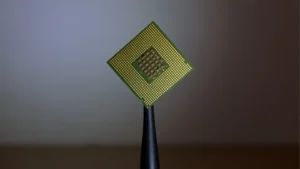Rapid prototyping is the rapid manufacturing of physical components, assemblies, or models. The usage of CAD aids the process of fast prototyping (Computer-aided design). A model or assembly designed on CAD is completed via 3D printing.
Rapid prototyping is certainly familiar to many in the design and architectural fields. For those who aren’t already familiar with the platform, we’ve included a full guide to fast prototyping. Rapid prototyping services can aid in the implementation of important changes in your company.
When is it appropriate for a corporation to use rapid prototyping?
The process of constructing or assembling the actual pieces of a model is referred to as rapid prototyping. Making the design with 3D computer-aided design necessitates a quick production method (CAD).
This is a collection of strategies that eventually aid in the development of a scaling model. The additive layer manufacturing technology may be crucial in the construction of the specific part.
Several manufacturing technologies have emerged as a result of rapid prototyping. One of the most widely utilised quick prototyping techniques is additive manufacturing. It may employ both subtractive and compressive techniques.
A high-fidelity prototype is one that looks very comparable to the final product. If there is a discrepancy between the final product and the prototype, it is the low fidelity prototype.
History of rapid prototyping:
What was the first commercial fast prototyping technology? The first rapid prototyping method was created in the 1980s, and it was designed to create prototype and model parts. With the introduction of stereolithography technology in 1987, rapid prototyping became increasingly popular.
Stereolithography is a laser-assisted procedure for solidifying ultraviolet light-sensitive liquid polymers.
Rapid prototyping techniques have advanced greatly over time, and several modern technologies have been incorporated in the process. Fused deposition modelling, object manufacturing, and selective laser sintering were some of the most frequent and popular methods of fast prototyping.
In April 1992, Stratasys was the first to disrupt the rapid prototyping business by using 3D techniques on FDM technology. In April 2000, Objet introduced the first 3D fast prototyping technology. Polyjet Technology was the name of the project.
To strengthen mass production capabilities and increase manufacturing speed, the fast prototyping sector has seen a number of developments and advances.
Read More: Utah Personal Injury Attorney
What is the purpose of fast prototyping?
The world is changing at a breakneck speed, and so are the technologies. In times like these, it’s more important than ever to take steps that will assist your company develop. The market is becoming more competitive.
As a result, firms must seek out new and imaginative ways to introduce and promote their products. Rapid prototyping might be one of the most effective strategies for increasing the appeal of a product on the market.
Rapid prototyping allows for speedier development and more innovative ideas. This is critical in ensuring that your products are more popular than those of your customers. Rapid prototyping is a practical technology that may be used with a variety of materials. This adaptable strategy can also be effective in a variety of situations.
Rapid prototyping frequently includes highly practical aspects that aid in the creation of 3D models. While concept models are simply used to generate ideas and assumptions about a product, physical models can help to improve its functionality.
Who is a proponent of rapid prototyping?
Because the developers would be able to see the physical model, they will be able to evaluate any defects (if any) and see how it might help them.
Functional prototypes can aid developers and manufacturers in determining the final product’s appearance. As a result, the developers may simply manage and make modifications to their model before going on to the next stage of development.
Its function, structure, mobility, and manufacturability may all be tested by the developers. This also saves a lot of money compared to restarting the product if a flaw is discovered in the final product.
For brands, having a working prototype is extremely beneficial and cost-effective. This aids in the preservation of a proper balance of utility and aesthetics. A prototype is quite useful when compared to the development of the final model.
Rapid prototyping has only aided in the advancement of technology. This satisfies a variety of requirements. The following are some of the most prevalent types of fast prototyping.
Rapid prototyping with 3D printing
One of the most well-known types of prototyping is 3D printing. Using additive layer technique or 3D printing, the essential features of the final model are constructed. This form is a quicker technique to get the desired outcomes for the final product’s appearance.
In the disciplines of quick prototyping, mould production, and industrial design, 3D printing services are frequently used to create models, which are subsequently gradually employed in the direct fabrication of some products.
Rapid prototyping of sheet metal
Rapid prototyping with sheet metal is a quick and cost-effective way to get access to all of your crucial papers. It follows detailed techniques such as bending, standard gauge cutting, and bending. This aids in the production of long-lasting metal parts.
Rapid prototyping of sheet metal is employed in a variety of industries, including energy, robotics, medical devices, automotive, and aerospace. The thickness of the sheet metal used for fast prototyping ranges from 0.006 inches to 0.25 inches.
CNC Rapid Prototyping:
CNC Rapid prototyping has the advantage of allowing you to use computerised equipment to create better-engineered models and prototypes in a shorter amount of time. This is crucial in the production of high-quality end-use materials.
CNC rapid prototyping is quick compared to other prototyping methods, and it may help you design even the most complicated pieces in the simplest way possible.
To build the real element, CNC quick prototyping may use several methods such as plastic injection moulding and pressure die casting. It will, in many situations, pave the way for the production of rigid metals in a standard form.
Furthermore, the models created with CNC rapid prototyping are simple to change or modify. This method works with a variety of materials, resulting in significant long-term benefits.
Prototyping using Rapid Injection Molding
Rapid injection moulding is used to develop prototypes of injection moulded items. These modelled pieces may be made in 2-5 weeks thanks to the thermoplastic resin.
The ability to create prototype models in a variety of materials and colours is one of the most significant advantages of quick injection moulding prototyping. This is also critical for preserving flexibility in the moulds.
CNC machines are frequently used to create quick injection moulding prototyping. A bridge-to-production approach is also used in the process, which allows for the creation of thousands of parts.
Casting of Vacuum Rapid Prototypes
Vacuum rapid prototype casting has become incredibly efficient, allowing prototype models to be developed much more quickly. This is a versatile technique that can aid in the creation of high-quality models.
It aids in the casting of resin and silicone models. It will be available in a variety of patterns and will aid in the removal of any potential bubbles. Vacuum quick prototype casting can help retain the material’s quality while also allowing for faster building and diversity in prototyping.





